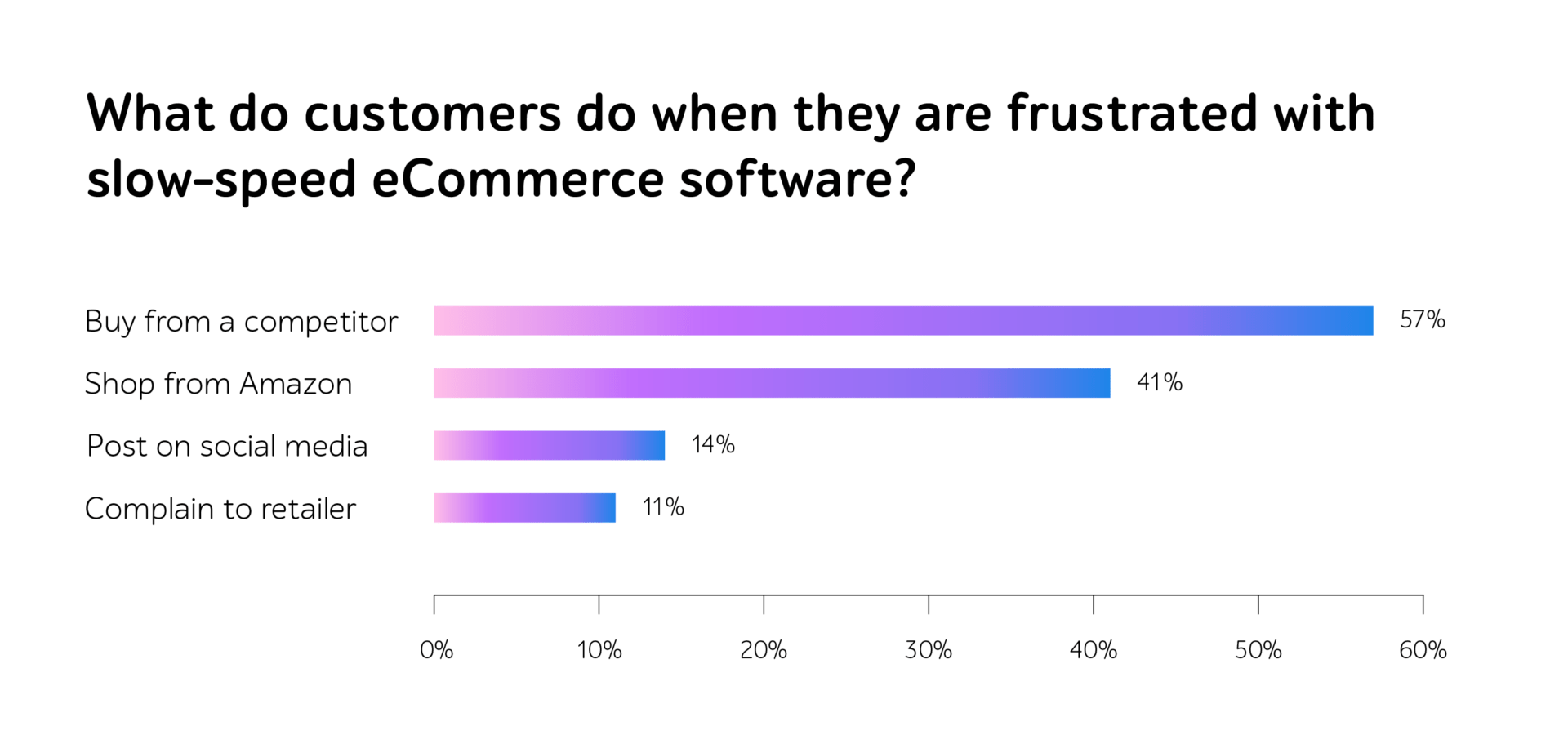
From idea to buying: 7 testing types to make your mobile eCommerce solutions flawless
eCommerce sales are steadily growing. While in 2021 the market size totaled $5.2 trillion, by 2026, it’s projected to reach $8.1 trillion.
As the number of digital shoppers increases (they comprise 33% of the population!), businesses strive to provide an unrivaled shopping experience.
The research by Baymard Institute shows that approximately 70% of people abandon their shopping carts due to an app’s poor functioning. And some of the competitors earn more.
With this article, we want to help you outperform them. Explore 7 types of testing to release defect-free mobile commerce solutions:
- Functional testing to ensure flawless software operation
- Performance testing to ease congestion
- Cybersecurity testing to prevent data breaches
- Compatibility testing to provide consistent app experience
- Integration testing to seamlessly merge software components
- Usability testing to enhance user experience
- Test automation to accelerate software releases.
Functional testing to ensure flawless software operation
Functional tests help scrutinize that key software elements (main and description pages, product categories, shopping cart, search, filtering, sorting) operate like clockwork. They also allow spotting and fixing defects in the search bar, forms, and payment gateways before the launch.
With this type of testing, companies, provide enjoyable end-user experiences, and make sure that customers can navigate, select, and purchase items without roadblocks.
Perfomance testing to ease congestion
Have many of your consumers left your app because it was too slow?
90% of people abandoned websites in 2020. And the same is true for mobile solutions.
Fast-loading pages, images appearing on the screen in the blink of an eye, and smooth software operation under high traffic, especially during holiday seasons like Black Friday, are just a few usual buyers’ expectations. If you fail to fulfill these demands, 57% of users will choose to shop from a competitor.

Source: Retail Systems Research
Conducting performance testing aids to:
- Check whether the system handles the target load
- Verify the platform’s behavior in extreme conditions
- Test the program’s performance under various network conditions (3G, 4G, or Wi-Fi)
- Measure the software response times during page loads, search queries, and checkout processes
- Assess how the app handles multiple users performing actions simultaneously.
Cybersecurity testing to prevent data breaches
73% of eCommerce companies interviewed consider security to be a major business challenge. It’s no surprise why, just look at this example.
A year ago, cybercriminals gained unauthorized access to SHEIN’s, the online fast-fashion retailer, payment systems and placed the credit card data of 39 million customers for sale on the dark web. The result? The brand’s owner was fined $1.9 million.
Virtual stores keep large amounts of private details about users, such as home and office addresses, debit and credit card data, buying history. Even a single breach can have devastating consequences.
Adopting cybersecurity testing is the way to identify vulnerabilities within the app as well as ensure all sensitive data is well-safeguarded against theft or unauthorized access.
Compatibility testing to provide consistent app experience
Shoppers access eCommerce IT solutions from an assortment of mobile devices, each running on different operating systems.
How to protect your solutions against all of that? That’s where compatibility testing comes in, allowing organizations to guarantee that the app functions smoothly across various devices, browsers, OSs, and their multiple combinations.
Integration testing to seamlessly merge software components
Mobile solutions for eCommerce often rely on interconnected components: payment gateways, customer databases, inventory management, order tracking, third-party APIs, CRM and CMS systems. To ensure that they work in harmony and the data is transferred accurately, we suggest focusing on integration tests to eliminate transaction failures and costly breakdowns in production. Good one if you have a goal to repeat visits and purchases.
Usability testing to enhance user experience
No one wants to spend endless hours looking for their desired items due to poor search functionality. An intuitive, user-friendly interface and navigation are imperative to keep buyers engaged and increase conversion rates.
With usability testing, businesses identify and rectify issues related to confusing layouts, cumbersome checkout processes, and unclear product descriptions.
Test automation to accelerate software releases
In the fast-paced world of online shopping every second can be the difference between a sale and an abandoned cart. Here, test automation becomes a valuable asset to expedite QA processes and release cycles without quality compromise.
To get more, adopt test automation during:
- Regression testing — to verify that recent changes don’t break existing functionalities.
- Performance testing — to mimic real-world scenarios with a large number of simultaneous users and evaluate system behavior under different loads.
- Compatibility testing — to validate software operation across as many combinations of devices and mobile browsers as possible.
Our case in point
One of the leading US-based manufacturers of home appliances requested a1qa’s support in boosting its eCommerce software quality and accelerating time to market.
So, the team helped increase the number of potential users by 30%, assured the seamless integration of the ready-made payment platforms and correct distribution of taxes, and cut the time required for smoke tests by 90%.
To wrap it up
From the first click to the final purchase, these 7 testing types — functional, performance, cybersecurity, compatibility, integration, usability, and test automation— allow eCommerce businesses to prepare high-quality mobile solutions for prime time.
Do you need assistance in reinforcing your eCommerce software quality? Contact a1qa’s team for professional QA support.
If you liked the article, share it via your social media.








